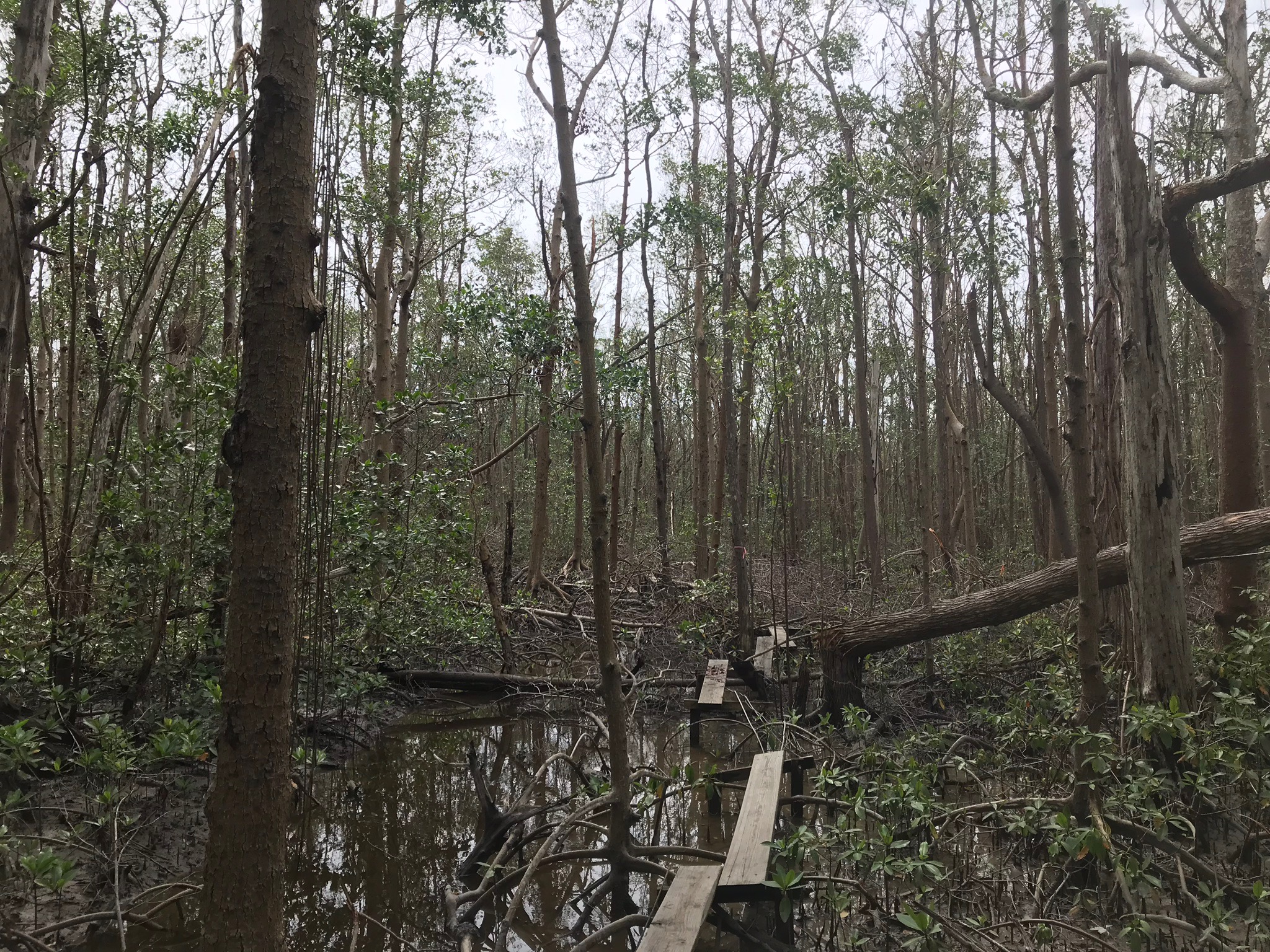

On September 10, 2017, Hurricane Irma made landfall in southwestern Florida as a category 3 storm with 115 mile-per-hour winds that swept up the coast. Along the way, it plowed through the mangrove forests in Everglades National Park, stripping leaves free and uprooting or snapping entire trees into pieces. But this natural disaster also brought a literal silver lining: a blanket of fine, gray soil rich in nutrients swept in by the storm surge.
This sediment layer seems to have benefitted the mangroves by fertilizing their roots and helping to build up soil elevation, scientists reported February 18 in Proceedings of the National Academy of Sciences (PNAS). The findings suggest that the same hurricanes that batter mangroves also help these forests withstand sea level rise and deliver nutrients that allow the trees to bounce back after the storm.
“These hurricanes are something that these [mangrove] systems have evolved to withstand or respond to,” says Ilka Feller, a senior scientist at the Smithsonian Environmental Research Center who was not involved in the new research. “Even though these storms knock these forests down, they can recover very quickly.”
Mangroves grow along the barrier between land and sea on subtropical and tropical coastlines and are routinely flooded as the tide rises and retreats. These ecosystems are vulnerable to both encroaching human development and to storms that sweep in from the ocean. However, scientists have also seen evidence of their resilience, says Edward Castañeda-Moya, a wetland ecologist at Florida International University in Miami and coauthor of the new research. His team has been tracking mangroves along the estuaries in Everglades National Park for 20 years. In the wake of Hurricane Wilma, which hit Florida in 2005, they found that more than 90 percent of the mangroves hugging the coastline of the national park lost their leaves. Yet the storm also carried in nutrient-rich sediments, and the forest regrew its leafy canopy in about five years.
Several months after Hurricane Irma struck, Castañeda-Moya and his colleagues visited the southwestern region of the Everglades to assess the damage and collect soil samples. They saw that the storm surge, which reached heights of nine feet in coastal areas, had swept sediments rich in the nutrient phosphorus six miles inland from the Gulf of Mexico. While the mangroves growing closest to the coastline were hit hardest by the storm, they also received the greatest bounty of nutrients; the new layer of sediment in these areas was twice as rich in phosphorus as the older soil underneath.
The fresh blanket of sediments laid down by Hurricane Irma also added up to an inch and a half of height to the surrounding soil. This might not sound like much, but it’s 14.4 times the amount of dirt these mangroves accumulate in a typical year.
“Some of this mineral sediment is going to be eroded, but it is going to be a net increase in elevation in these mangrove areas,” Castañeda-Moya says. This is crucial because mangroves are locked in a constant battle with sea level rise, which has increased dramatically in southern Florida in the past decade. “They need to keep pace with sea level rise; if they don’t do that, they are going to drown.”
The new findings make a compelling case for how sediments carried in by hurricanes can help wetlands stand their ground in the face of sea level rise, says Kyle Cavanaugh, a coastal geographer at the University of California, Los Angeles who was not involved in the research.
“We also need to study how the severity of hurricane disturbance affects these processes,” he told Popular Science in an email. Hurricanes Wilma and Irma were both category 3 storms when they hit the Everglades; more ferocious category 4 and 5 storms may not have the same impacts on nutrients and soil elevation as less intense storms.
Major hurricanes are expected to become more frequent due to climate change, Feller points out. “Can the forest recover and rebuild itself after a storm as you increase the frequency and intensity of storms?” she says. “With climate change, will that be possible?”
Castañeda-Moya is concerned that back-to-back storms could imperil the mangroves as well. “The forest needs time,” he says. “If you have the flu, you need time to recover; if you have the flu again the next month, it’s going to be more difficult for you. It’s the same situation with this coastal ecosystem.”
He and his colleagues will continue tracking how mangroves in the everglades recover from Irma and other storms. These coastal forests provide many services that humans depend on—they buffer the coastline from storms, prevent erosion, improve water quality, shelter commercially valuable fish and crustaceans, and store carbon that would otherwise be floating around in the atmosphere in greenhouse gases. Understanding how hurricanes affect these unique ecosystems will give scientists a sense of how resilient they may be in the future, Castañeda-Moya says.
